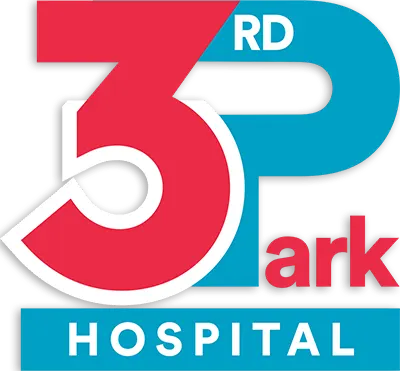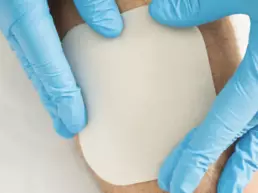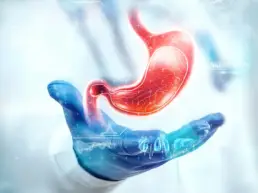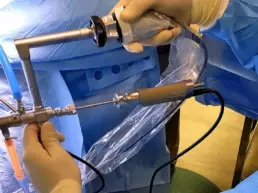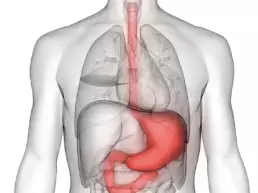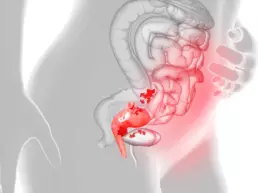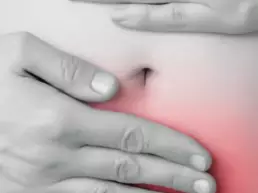Uterine Fibroids in Women
Uterine Fibroids (also called Leiomyomas or Myomas) are a common type of noncancerous (benign) tumor growths made of muscle and tissue, that form in and on your uterus. They often appear during the fertility years of women.
Uterine Fibroids vary in number and sizes, you might have a single fibroid or multiple. Some of these growths are too small to see. Others can grow to the size of a grapefruit or even larger. A fibroid that gets very big can distort the inside and outside of the uterus. In extreme cases, uterine fibroids grow large enough to fill the pelvis or stomach area, which can make a person look pregnant. Small fibroids often don’t need treatment, but larger fibroids would be treated with medications or surgery.
Not all uterine fibroids cause symptoms, but when they do, fibroids symptoms include heavy menstrual bleeding, irregular vaginal bleeding, back pain, frequent urination and painful intercourse. Sometimes, a person has no symptoms and is unaware they have fibroids. Fibroids treatment would depend on your symptoms.
Types of Fibroids

There are different types of fibroids depending on location and how they attach. Types of uterine fibroids include:
- Intramural Fibroids are the most common type. They are embedded into the muscular wall of your uterus.
- Submucosal Fibroids grow under the inner lining of the uterus.
- Subserosal Fibroids become quite large and grow into your pelvis under the lining of the outer surface of the uterus.
- Pedunculated Fibroids are the least common type. These fibroids attach to the uterus with a stalk or stem, often described as mushroom-like, because of their shape.
Causes of Fibroids
The exact cause is unknown. Healthcare providers believe the hormones estrogen and progesterone might play a role. Most fibroids appear in people of reproductive age. Studies show that fibroids tend to grow when hormone levels are higher. For instance, during pregnancy and tend to shrink when hormone levels are lowwe (e.g. menopause).
Symptoms of Fibroids
Many women with fibroids do not show any symptoms. Those who experience symptoms, tend to have them due to the location, size and number of fibroids.
The most common uterine fibroids symptoms include:
- Heavy menstrual bleeding and/or painful periods.
- Longer or more frequent periods.
- Pelvic pressure or even pain.
- Pain in the stomach area or lower back or pain during intercourse.
- Frequent urination and/or trouble urinating.
- Constipation.
- Growing stomach area.
Sometimes, however rarely fibroids can cause sudden pain when it outgrows its blood supply and starts to die.
Fibroids Treatment
Uterine fibroids treatment can vary depending on the size, number and location, as well as symptoms caused. If you are not experiencing fibroids symptoms, you may not need any treatment. Small fibroids can often be left untreated. Some people may never experience any fibroids symptoms or have any problems associated with uterine fibroids. In such cases, your doctor may recommend monitoring your fibroids with pelvic exams or ultrasound.
If you are experiencing fibroids symptoms, such as anemia from excess bleeding, moderate to severe pain or urinary tract and bowel problems, you will need the treatment. Your fibroids treatment plan will depend on few factors, including:
- Number of fibroids.
- Size of fibroids.
- Location of fibroids.
- Fibroids symptoms experienced.
- Your desire to keep your uterus.
The best choice of treatment will also depend on your plans regarding potential pregnancy in the future. Discuss with the doctor your fertility goals when concluding fibroids treatment options. Treatment options can include:
Medications
- Over the Counter Pain Medications can help you manage the pain and discomfort caused by fibroids. OTC medications include acetaminophen and ibuprofen.
- Iron Supplements can help with anemia caused by excess bleeding.
- Birth Control can also help with fibroids symptoms, such as, heavy bleeding during and between periods and menstrual cramps. Birth control options include oral contraceptive pills, rings, injections and intrauterine devices (IUDs).
- Gonadotropin Releasing Hormone Agonists work by shrinking the fibroids. Sometimes they are used to shrink fibroids prior to surgery, making the removal easier. These medications are temporary, when intake is stopped, fibroids can grow back.
- Oral Therapies, such as Elagolix, which is a new oral therapy for heavy uterine bleeding in women, who haven’t experienced menopause with symptomatic uterine fibroids. It can only be taken for up to 24 months. Another oral therapy, tranexamic acid, treats heavy menstrual bleeding.
Make sure you discuss with your doctor about any medication you take. Always consult with your doctor before starting a new medication to understand any potential complications.
Fibroid Surgery
There are several factors to consider when it comes to the types of fibroids surgeries. The size, location and number of fibroids would influence the type of surgery, but your future plans for pregnancy are also very important when deciding on fibroids treatment plan. Some surgical options will preserve your uterus and allow you to plan pregnancy in the future, while other options can either damage or will include the removal of the uterus.
Myomectomy is a surgical procedure used to remove uterine fibroids. There are several types of myomectomy. The type of procedure chosen will depend on fibroids location, the size and number. The types of myomectomy procedures can include:
- Hysteroscopy consists of insertion of a scope (a thin, flexibl and tube-like tool) through your vagina and cervix and into your uterus. Surgeon will use the scope to cut away and remove the fibroids.
- Laparoscopy is the procedure, when surgeon uses a scope to remove the fibroids. Unlike hysteroscopy, this procedure involves placing a few small keyhole size incisions on your abdomen. This is how the scope will enter and exit your body.
- Laparotomy is the procedure, where surgeon makes one larger incision on your abdomen and removes uterine fibroids through this one cut.
If future pregnancies are not planned, surgeon will recommend additional options. These options are very effective, but they usually prevent future pregnancies. Such as:
- Hysterectomy is the only way to cure uterine fibroids by removing your uterus completely. Fibroids will not grow back and your symptoms should go away. If ovaries are left in place, you would not go into menopause after a hysterectomy. This procedure might be recommended if you’re experiencing very heavy bleeding or if you have large fibroids. Minimally Invasive hysterectomy includes vaginal, laparoscopic or robotic methods.
- Uterine Fibroid Embolization is when an interventional radiologist performs this procedure with the help of gynecologist. A small catheter would be put in your uterine artery or radial artery and small particles would be injected, which then block the flow of blood from the artery to fibroids. Loss of blood flow would shrink fibroids and improve your symptoms.
- Radiofrequency Ablation (RFA) is a safe and effective fibroids treatment that uses microwave (RF) energy to treat fibroids. It can be recommended for people who haven’t reached menopause. It helps treat smaller fibroids.
When to seek Fibroids Treatment
See your gynecologist if you have:
- Pelvic pain is not going away.
- Heavy or painful periods.
- Spotting or bleeding between periods.
- Trouble emptying your bladder.
- Continuous tiredness and weakness, which can be symptoms of anemia (low level of red blood cells).
Seek medical care immediately, if you have severe bleeding from your vagina or sharp pelvic pain.
Specialized Medical Services in Kenya
Explore our services
Wound Care Specialist Services
Wounds that are not managed well cause a lot of complications. At our hospital in Nairobi, we…
Bariatric Surgery
Bariatric Surgery in Kenya, also referred to as weight loss surgery, is a category of surgical…
Gynaecology Surgeries
Gynaecology is a medical specialty that focuses on the female reproductive system, including the…
Orthopaedic Surgeries and Joint Replacements
We offer a the whole spectrum of orthopaedic surgeries at our private hospital in Nairobi.
General Surgery
General Surgery includes a core knowledge of anatomy, physiology, metabolism, immunology,…
Blood Transfusion Services
We have a competent team and blood bank services to handle the needs of our patients requiring…
Gastroenterology and Endoscopic Procedures
Our gastroenterology services cover a range of conditions affecting the digestive system. We offer…
Adenomyosis Treatment
Adenomyosis is a chronic painful condition, with growth of the inner layer of the uterus (aka…
Interventional Pain Management
Interventional Pain Management is a "discipline of medicine devoted to the diagnosis and treatment…
